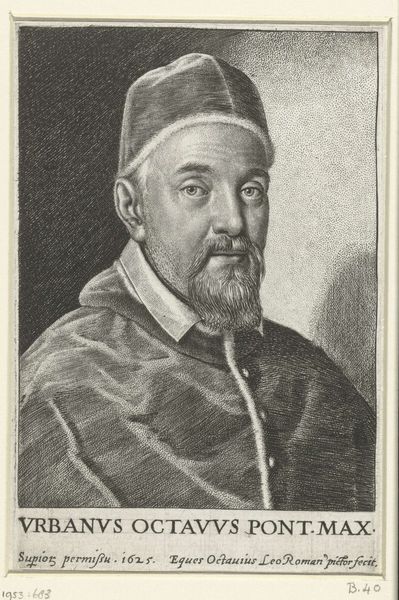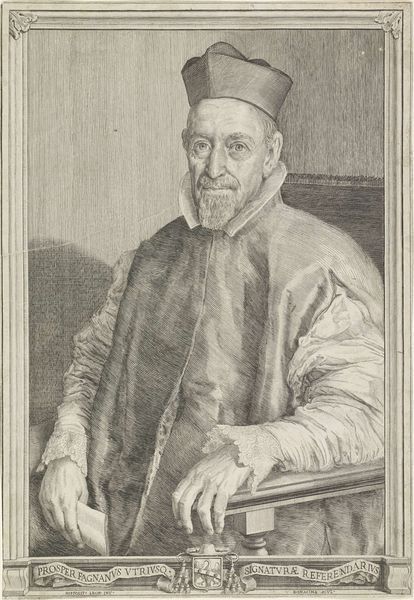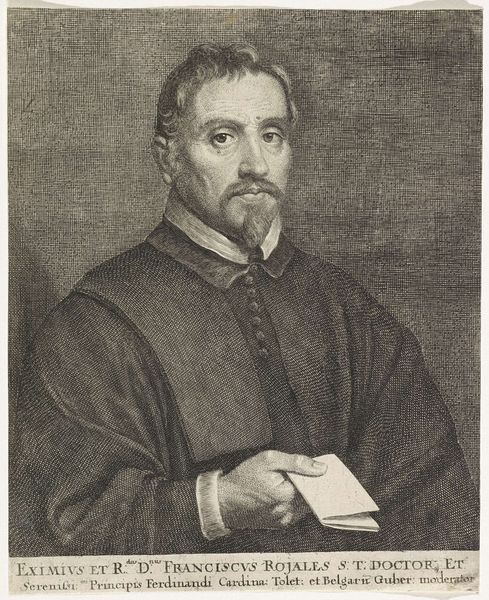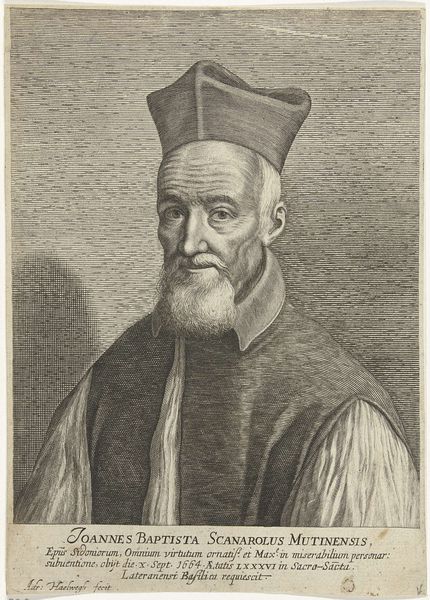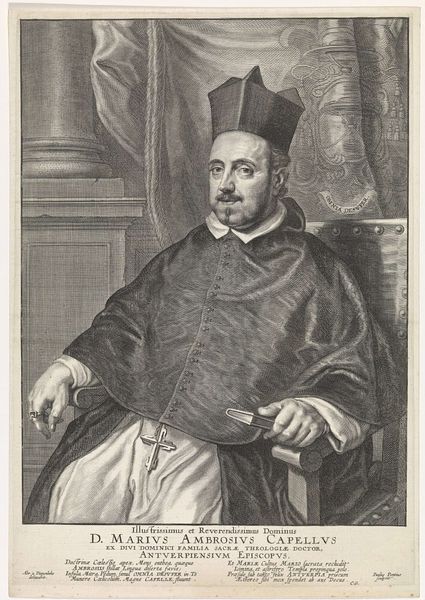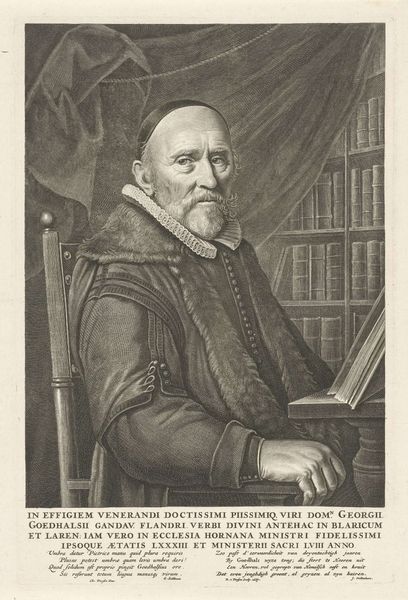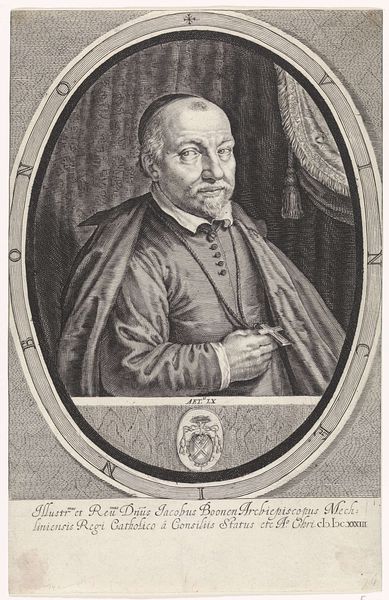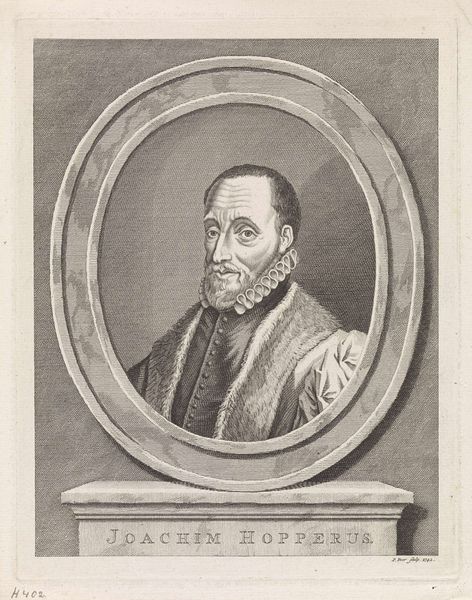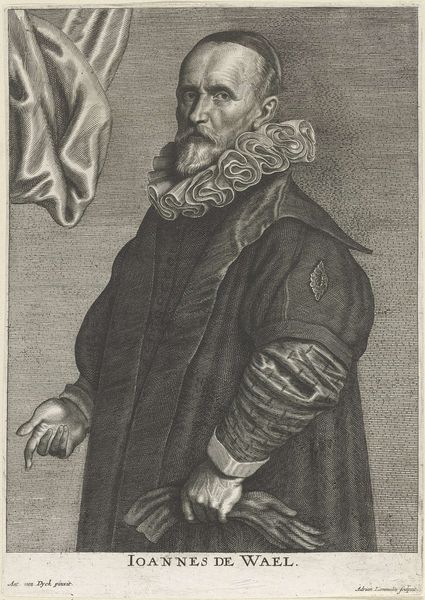
print, engraving
#
portrait
#
baroque
# print
#
engraving
Dimensions: height 245 mm, width 179 mm
Copyright: Rijks Museum: Open Domain
Curator: Lucas Vorsterman I, working sometime between 1620 and 1675, created this engraving titled "Portret van bisschop Antonius Triest", which translates to "Portrait of Bishop Antonius Triest." It resides here at the Rijksmuseum. Editor: It has this compelling somberness to it. I mean, it is a monochrome print, but there's something beyond that—the way the light interacts with his robes and that weighty stillness. Curator: Indeed. It’s critical to remember that portraits of this stature during this period were never merely likenesses. Bishop Triest was a prominent figure. Editor: The sheer level of detail Vorsterman achieves through engraving is stunning. You can almost feel the texture of the fabrics, from the coarse weave of his cloak to the delicate lace at his wrists. What kind of process does the creation involve? Curator: Vorsterman would have used a metal plate, likely copper, incising lines into its surface to hold ink. The paper is then pressed against it to create this reverse image. The level of craft in rendering not just the textures, as you point out, but also the intricate facial details really elevates this. It almost humanizes him. Editor: Right, it's this tension between the labor-intensive production, and the status that's being communicated through it that fascinates me. What was his role and contribution in Ghent at the time? Curator: Triest played a crucial role in the Counter-Reformation in Ghent. He advocated for more education, and initiated projects such as reconstruction work, and was considered progressive for his time, and was also involved in the persecution of Protestants. These intricacies cannot be separated. Editor: It's incredible how the artist could capture his public persona while subtly hinting at the complexities beneath the surface. That engagement with socio-political status embedded within the artistry is compelling, isn’t it? Curator: Precisely. Reflecting on Vorsterman's piece, it's impossible to disentangle his art from these questions of identity, status, and religious authority. Editor: From a materials perspective, to think that this delicate piece originates from such meticulous labor really opens it up, doesn’t it? The intersection of faith, production, and persona makes this print so compelling.
Comments
No comments
Be the first to comment and join the conversation on the ultimate creative platform.
